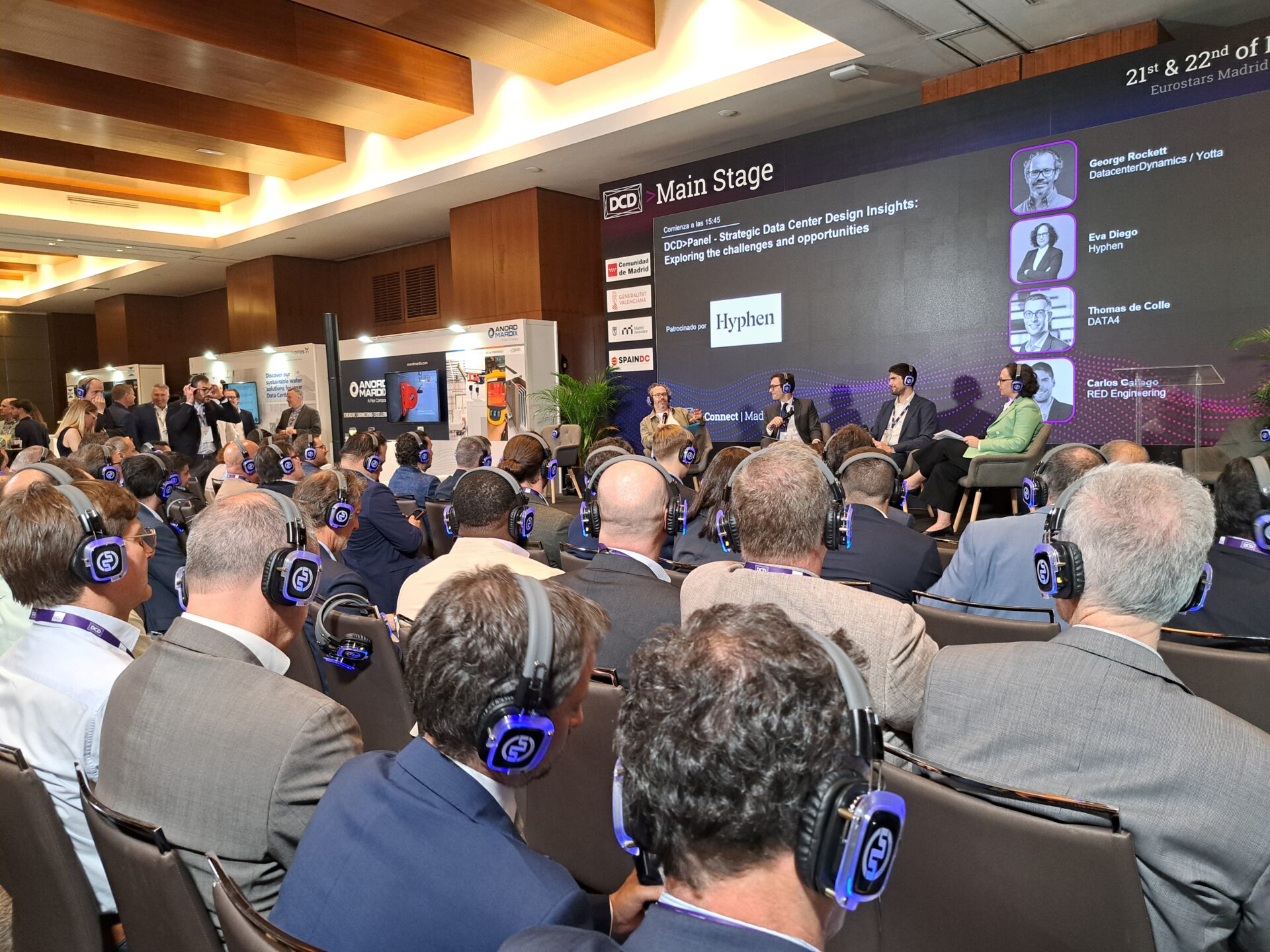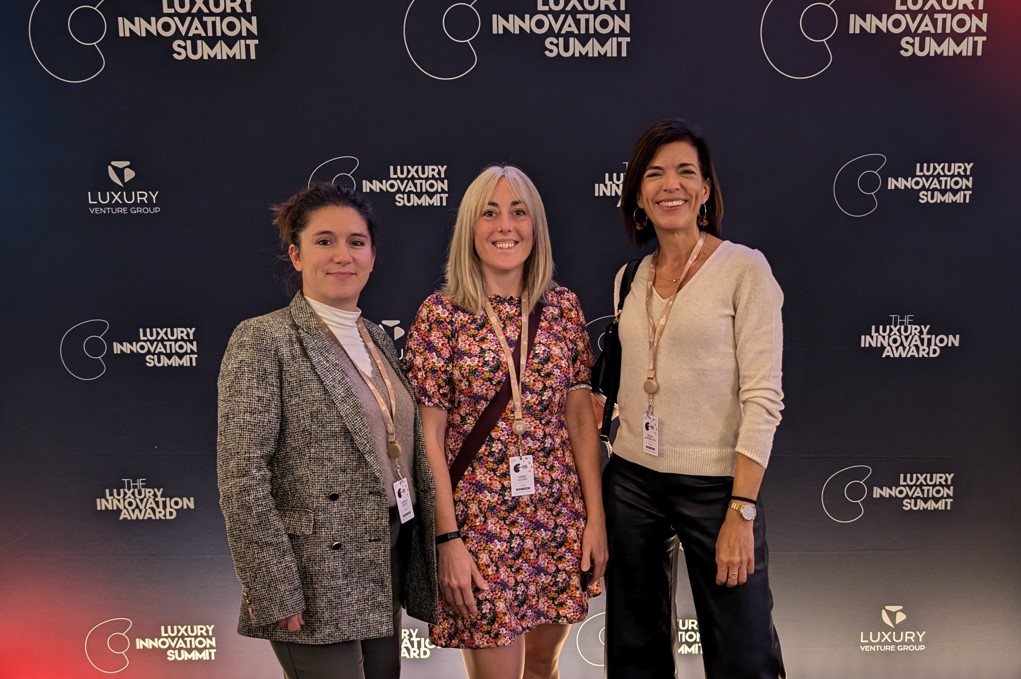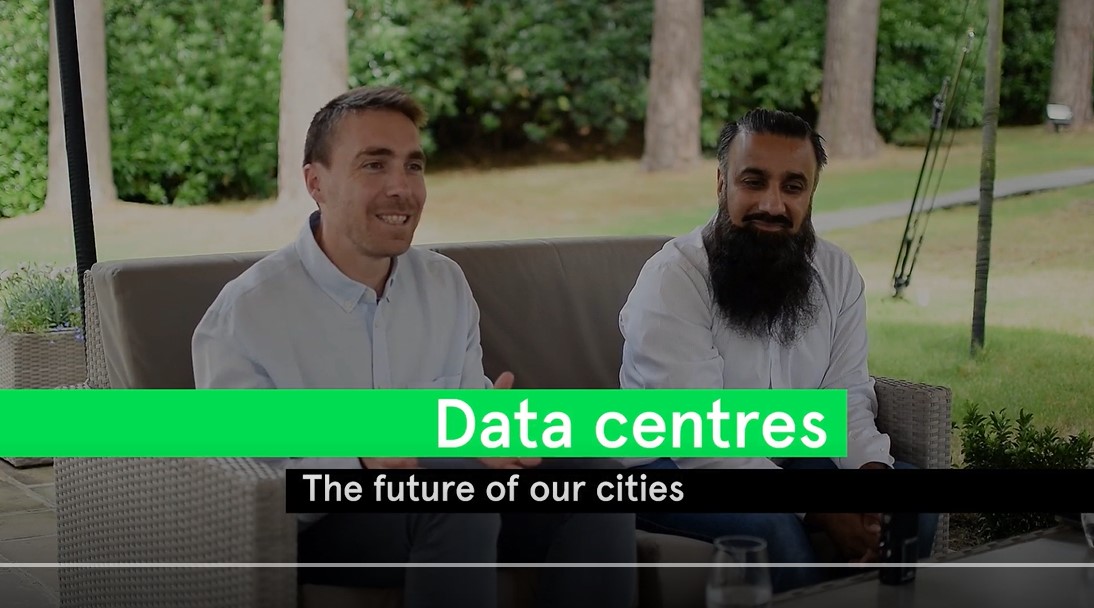We were delighted to discuss strategic data centre design with a panel of experts at DCD Connect Madrid recently.
Hyphen director Eva Diego was joined by Thomas De Colle (Head of Design and Construction, South Europe, Data4), and Carlos Gallego (Associate at RED Engineering) in a panel moderated by George Rockett (Co-founder of DatacenterDynamics and CEO at Yotta).
Why don’t data centres look like cathedrals?
George kicked off the lively discussion with a playful question, asking why data centres don’t typically look more like cathedrals, rather than warehouse boxes. Eva identified parallels between the two types of buildings, both functioning as part of the urban landscape, as focal points of the community, and enhancing the environments around them, whereas Thomas noted the importance of efficiency in a multitude of areas, including technical requirements, costs, use of space, and sustainability, through the data centre’s lifecycle. For Carlos, the answer was that a data centre requires a lot of power, cooling, and ventilation, which just wouldn’t be practical in a structure like a cathedral.
Efficiency and the urban landscape
Eva continued with the cathedral example and the points made by Carlos and Thomas by explaining that like cathedrals, data centres are both challenging and are innovative, combining efficiency with design. As part of this process, we need to consider how the community is affected, but also the people who will be using the space directly. Gone are the days where a data centre would be one massive building with 20 employees. Nowadays, we are often talking about campuses, which could have many people using them every day, with subsequent phases and extensions. There are many considerations of what is needed in this space, including breakout spaces and sustainable transportation links. It’s important that we don’t have a negative impact on the people living nearby, as well as the local biodiversity.
Carlos explained that noise is an important thing to factor in and its impact on neighbours, including generator testing, HVAC systems and cooling towers. The aim is to be as quiet as possible, while also achieving as much power as possible within the substations. Carlos and Thomas discussed the heat produced by data centres and its huge potential to be reused beyond data centres. We are currently facing a challenge where excess heat is readily available but not yet fully utilised by local authorities and industry.
Asked about whether masterplanning is changing, Eva says it can be a slow process, but we are seeing progress. We have lots of preliminary conversations with the authorities and are seeing more demands to give back to the community. You should, for example, dedicate a space for public transport, which is properly organised with access to and from the site, and to create meaningful surrounding green areas. Of course, there is a safety concern because this is a critical industry, and you must find the right balance, considering things like traffic, pedestrian issues etc.
Eva said that it’s those developers, like Data4, who are a good example to follow. They go beyond the minimum requirements set by the local authorities and form fruitful collaborations with them.
Greenfield versus brownfield
Thomas raised the topic of greenfield versus brownfield, suggesting that brownfield sites, which are already built upon, are potentially a better solution for data centre sites within cities. Eva added that cities work because they are dense and can take advantage of using shared resources extremely efficiently.
From an engineering perspective, Carlos discussed how urban environments can be more of a challenge, when you’re close to housing, due to noise emissions. Carlos also highlighted the potential of working with industries that produce excess cooling to further integrate data centres into the city.
Sustainability
Talking further on sustainable approaches, Eva highlighted that there is common ground between the many stakeholders in data centre construction, in measuring the efficiency of a data centre and with initiatives like the European Green Deal and the UN-backed Race to Net Zero. We are focused on the lifecycle of a building. So, it begins with our part from design inception where we can measure the embodied carbon in the building and then you look at the building operations. Looking at the whole life cycle is a good way of measuring it.
Thomas highlighted that Data4 do this life cycle analysis, measuring the carbon footprints of all its buildings and were pleased to record a 13% reduction in carbon emissions in building construction over the past six years, which is a significant achievement.
Planning for the future
Thomas, Eva and Carlos agreed that part of this reduction in carbon emissions can be achieved by choosing the right building materials and processes, designing well with what you have and always looking at ways to do things better and more sustainably.
Eva was asked to comment on how close we are to achieving net zero goals as an industry. She explained that the market is currently unbalanced, with contradictions between methods for rapid growth and sustainability. Progress is also more evident in some countries where stricter regulations push for sustainable solutions. And we also see uneven practices, where some data centre operators are ahead, while others fall behind. Eva praised Data4 explaining that they are ahead of the curve, and it is a pleasure for us to work collaboratively with companies like them that have this sense of purpose and competitive advantage, which helps us improve too.
Watch the full discussion here


